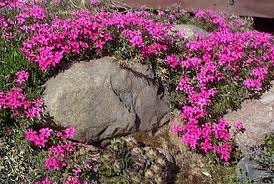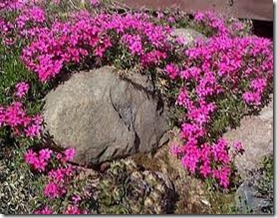Creeping phlox (Phlox subulata) is a perennial ground cover popular with gardeners for its hardiness and masses of tiny pink, white or blue colors. Some varieties of phlox also have a pleasing fragrance. If left alone, creeping phlox can spread indefinitely, even invading desirable areas of the landscape. The plant requires very little care to thrive, but it will last longer and bloom more profusely in the spring if it is bedded down properly for the winter once the cool weather of fall arrives.
Difficulty: Moderately Easy
Instructions
Things You’ll Need:
- Pruning shears
- Mulch
- Evergreen boughs
-
Remove wilted flowers by snapping them off as soon as they have declined. This will encourage greater growth longer into the fall season.
-
Cut the stems of the creeping phlox back to half their length once the plant stops blooming in the fall. This will help the plant conserve energy to bloom again in early spring. If you want to propagate new plants, plant the cut stems in soil indoors. They may take root and be planted as new plants in the spring.
-
Watch for foliar nematodes in the fall, when wet, dropped foliage can create the constantly moist conditions that give rise to the pests. They are also common during very rainy springs. These microscopic roundworms will consume the leaves and stems of the creeping phlox, leaving gaping holes. Spray your plants with an insecticidal soap to kill the worms.
-
Protect the plant from harsh winters by surrounding it with a layer of mulch and then covering it with evergreen boughs. A layer of snow can also help protect it from winter burn, which is when the soil freezes, leaving the creeping phlox’s shallow roots unable to draw any water even as the water in the plant continues to evaporate from the leaves. The end result is the plant being scorched.
Tips & Warnings
-
Spider mites (prevalent during heat and drought) and foliar nematodes (prevalent during periods when the foliage is constantly wet or under high humidity) are the most common pests to watch for in your phlox plants.


Deprecated: strpos(): Passing null to parameter #1 ($haystack) of type string is deprecated in /home/agriviek8Qv/agriviet.net/public_html/wp-includes/comment-template.php on line 2522